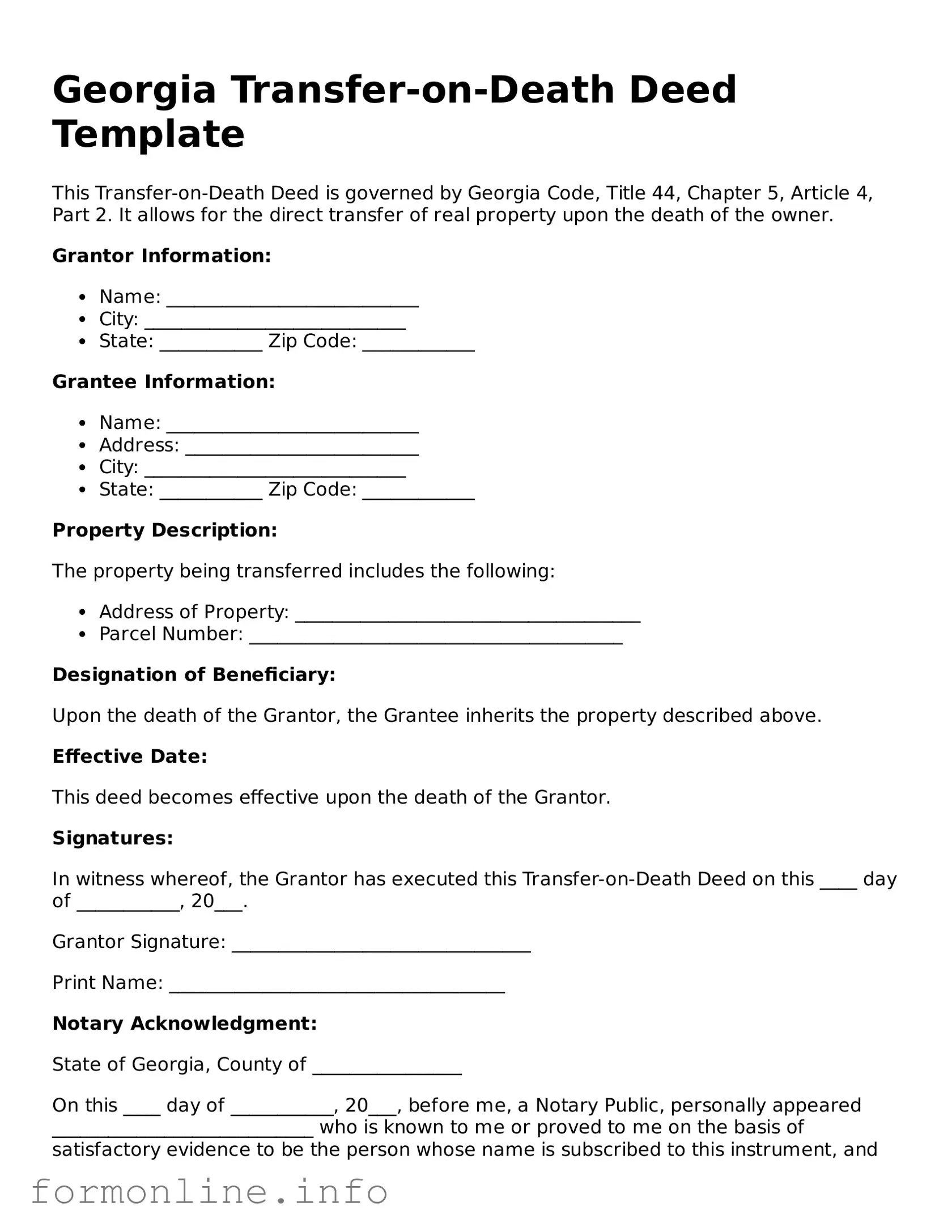Georgia Transfer-on-Death Deed Template
This Transfer-on-Death Deed is governed by Georgia Code, Title 44, Chapter 5, Article 4, Part 2. It allows for the direct transfer of real property upon the death of the owner.
Grantor Information:
- Name: ___________________________
- City: ____________________________
- State: ___________ Zip Code: ____________
Grantee Information:
- Name: ___________________________
- Address: _________________________
- City: ____________________________
- State: ___________ Zip Code: ____________
Property Description:
The property being transferred includes the following:
- Address of Property: _____________________________________
- Parcel Number: ________________________________________
Designation of Beneficiary:
Upon the death of the Grantor, the Grantee inherits the property described above.
Effective Date:
This deed becomes effective upon the death of the Grantor.
Signatures:
In witness whereof, the Grantor has executed this Transfer-on-Death Deed on this ____ day of ___________, 20___.
Grantor Signature: ________________________________
Print Name: ____________________________________
Notary Acknowledgment:
State of Georgia, County of ________________
On this ____ day of ___________, 20___, before me, a Notary Public, personally appeared ____________________________ who is known to me or proved to me on the basis of satisfactory evidence to be the person whose name is subscribed to this instrument, and acknowledged to me that he/she executed the same in his/her capacity, and that by his/her signature on the instrument, he/she executed the instrument.
Witness my hand and official seal:
Notary Public Signature: _____________________________
My Commission Expires: ______________________________
